Alocasia plants, also known as elephant ears, are admired for their stunning appearance. These plants have large, heart- or arrow-shaped foliage that resembles the ears of an elephant, hence their common name. Their unique leaf colors make them a popular choice for both indoor and outdoor gardens.
Appearance of Alocasia
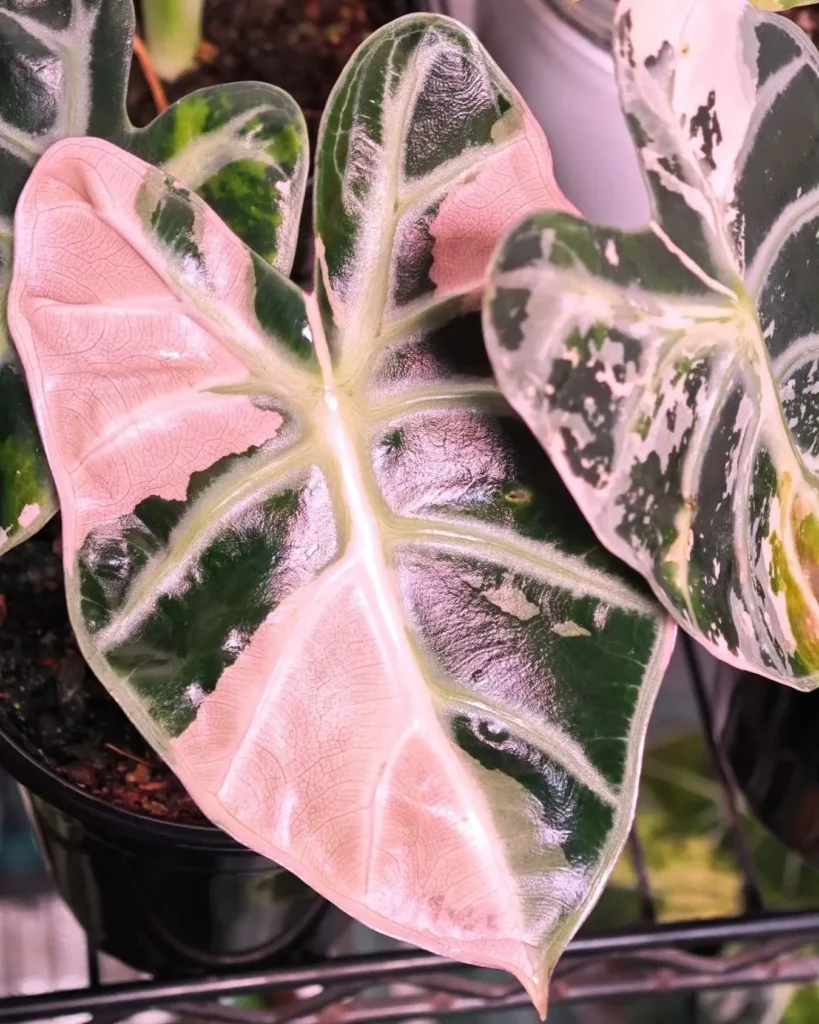
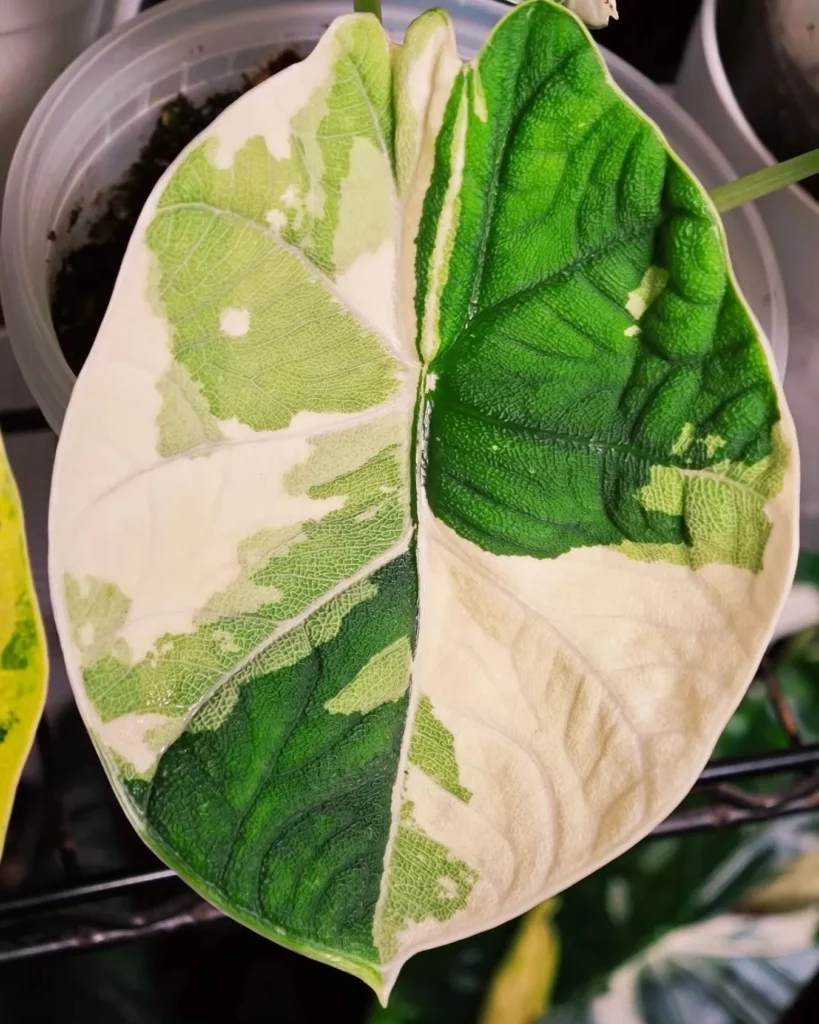
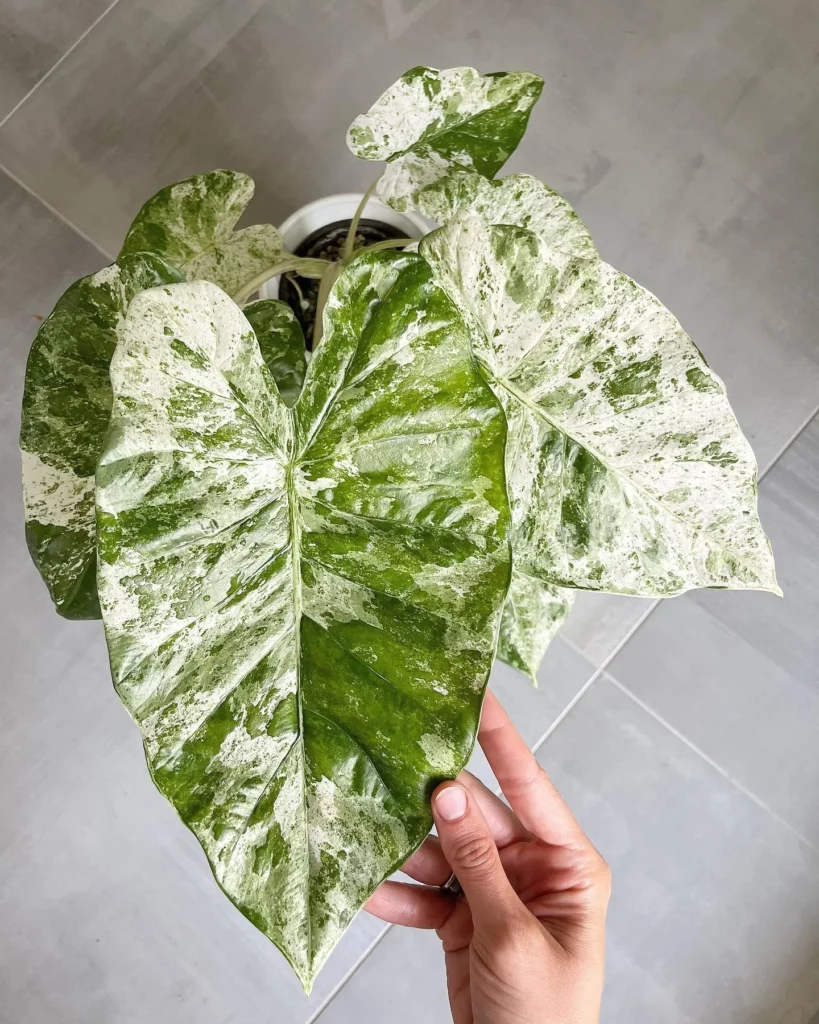
The leaves of Alocasia plants come in a variety of colors, ranging from vibrant greens and rich blacks to striking reds and shimmering silvers. Some species and cultivars even feature creamy white veining or captivating mottled patterns on their leaves. This incredible diversity in leaf colors adds intrigue and visual interest to any space.
The size and shape of the leaves also vary among different Alocasia varieties. Some have broad leaves with rounded tips, while others display slender and pointed foliage. This diversity allows for endless possibilities in creating captivating displays and arrangements.
No products found.
The distinct appearance of Alocasia plants brings a touch of the tropics to any indoor or outdoor setting. Their large, striking leaves make them a focal point and create a sense of drama and elegance. Whether grown as a standalone specimen or combined with other plants, Alocasia plants are sure to add a captivating aesthetic to your space.
Light Requirements for Alocasia
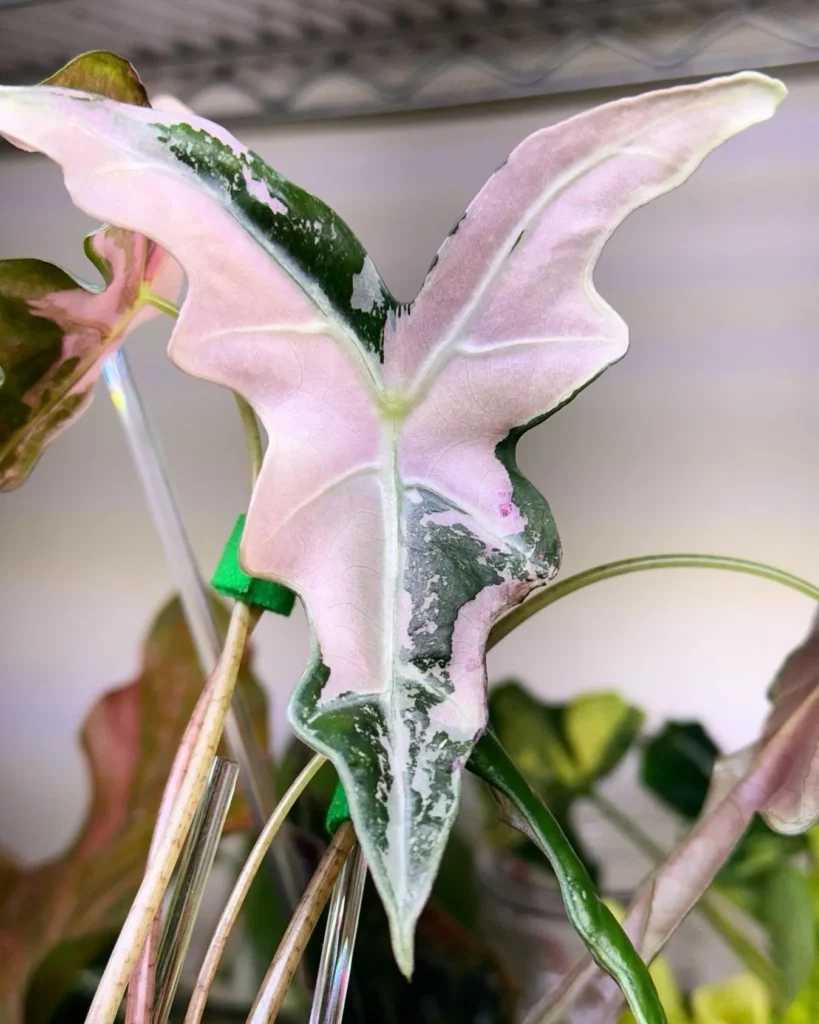
Alocasia plants require the right amount of light to thrive and maintain their vibrant foliage. Understanding their light requirements is essential for their overall health and growth.
No products found.
Bright Indirect Light: Alocasia plants prefer bright indirect light, replicating the conditions they would experience under the dense canopy of a rainforest. This means placing them near a window with eastern or western exposure, allowing filtered sunlight to reach the plant. The indirect light provides the perfect balance of brightness without exposing the leaves to intense sun rays.
Shade: Outdoors, Alocasia plants should be grown in a spot that receives open shade. This means finding an area where the plant is protected from direct sunlight, which can be harmful and cause the leaves to scorch.
Supplemental Artificial Grow Lights: In situations where natural light is limited, such as in certain indoor settings, supplemental artificial grow lights can be used. These lights provide the necessary spectrum and intensity of light for Alocasia plants to thrive. It is important to position the grow lights at an appropriate distance from the plant to avoid any damage caused by excessive heat or brightness.
No products found.
Watering Alocasia

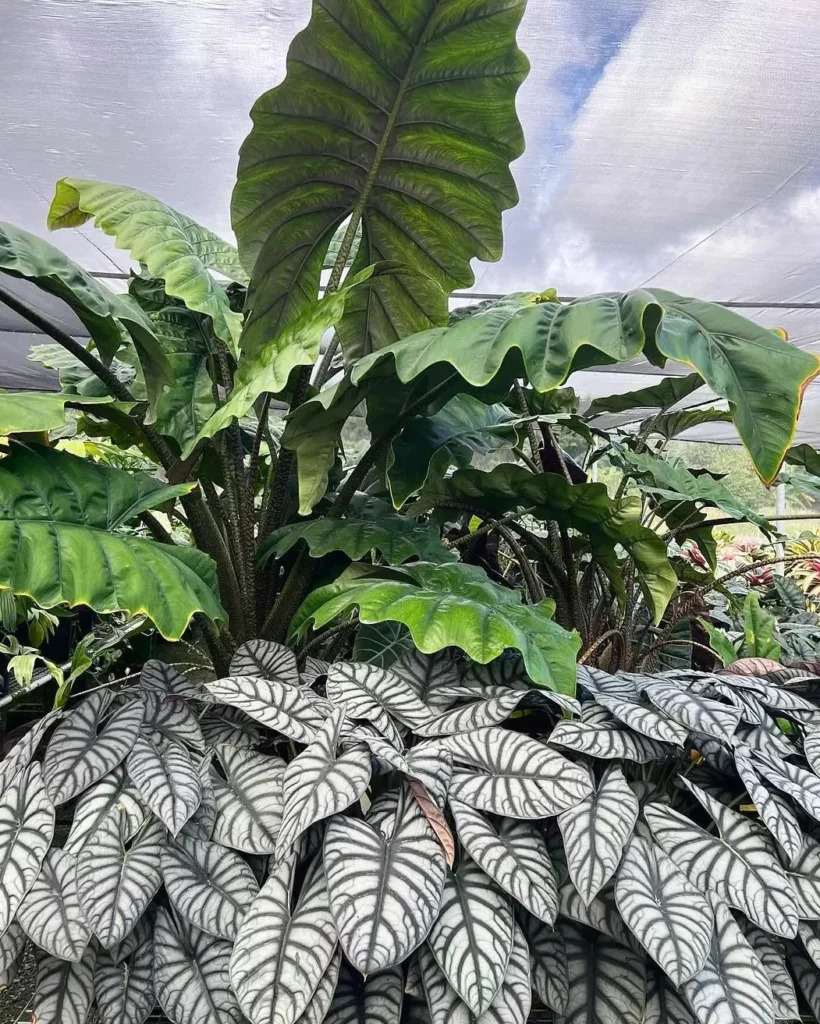
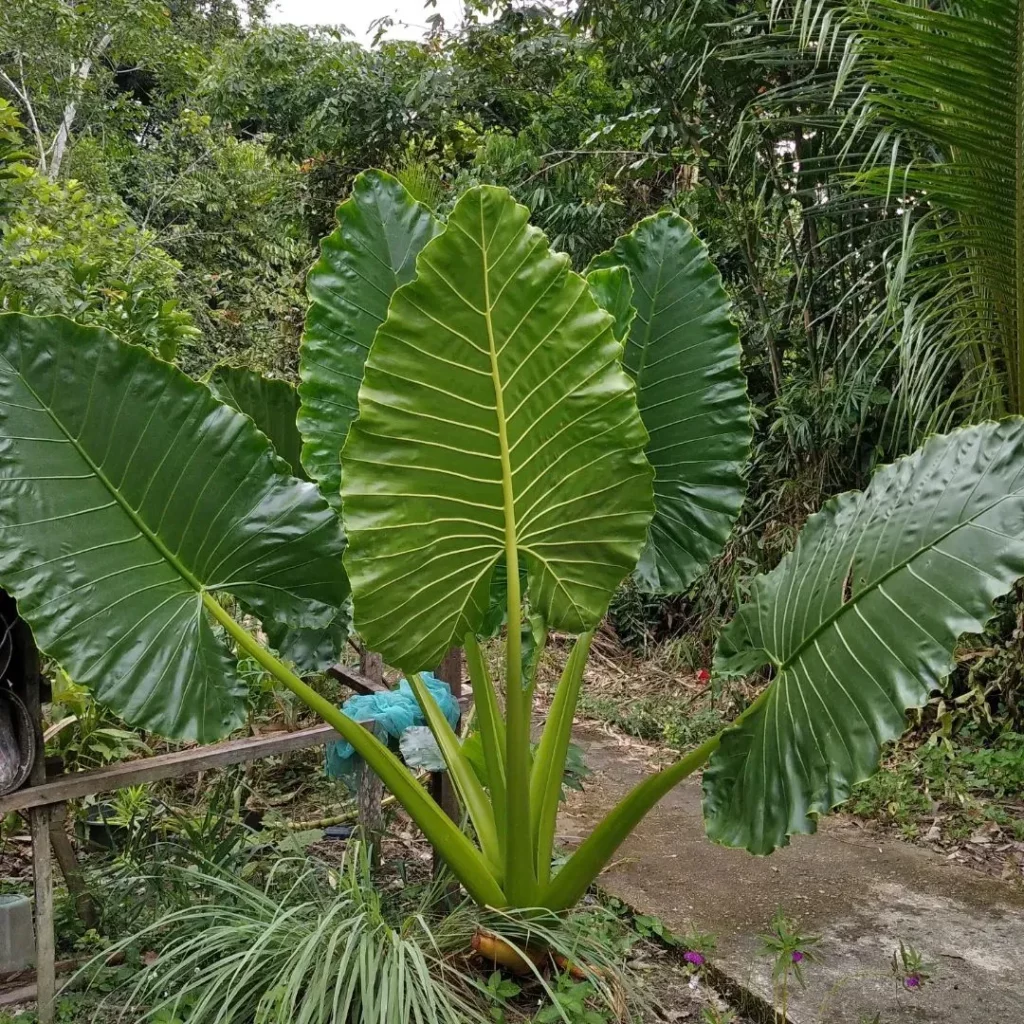
Alocasia plants require consistent and proper watering to thrive. Maintaining even moisture levels in the soil is essential for their well-being.
No products found.
Here are some guidelines to ensure that you water your Alocasia properly:
- Check the soil: Before watering your Alocasia, check the top 2 to 3 inches of the soil with your finger. If it feels dry to the touch, it’s time to water.
- Water thoroughly: When watering, make sure to thoroughly saturate the soil. Allow water to flow into the pot until it starts coming out of the drainage hole.
- Avoid overwatering: While it’s important to keep the soil moist, be cautious not to overwater your Alocasia. Too much water can lead to root rot and other problems.
- Dryness in between watering: It’s crucial to let the soil dry out slightly before watering again. This helps prevent soggy conditions that can harm the plant.
- Dormant period: During the dormant period in fall and winter, reduce the frequency of watering. However, remember to keep the soil slightly moist to support the plant’s health.
- Water quality: For the best results, use distilled water or allow tap water to sit for 24 hours to allow any chemicals to dissipate. This reduces the risk of mineral buildup on the leaves.
No products found.
Fertilizing Alocasia
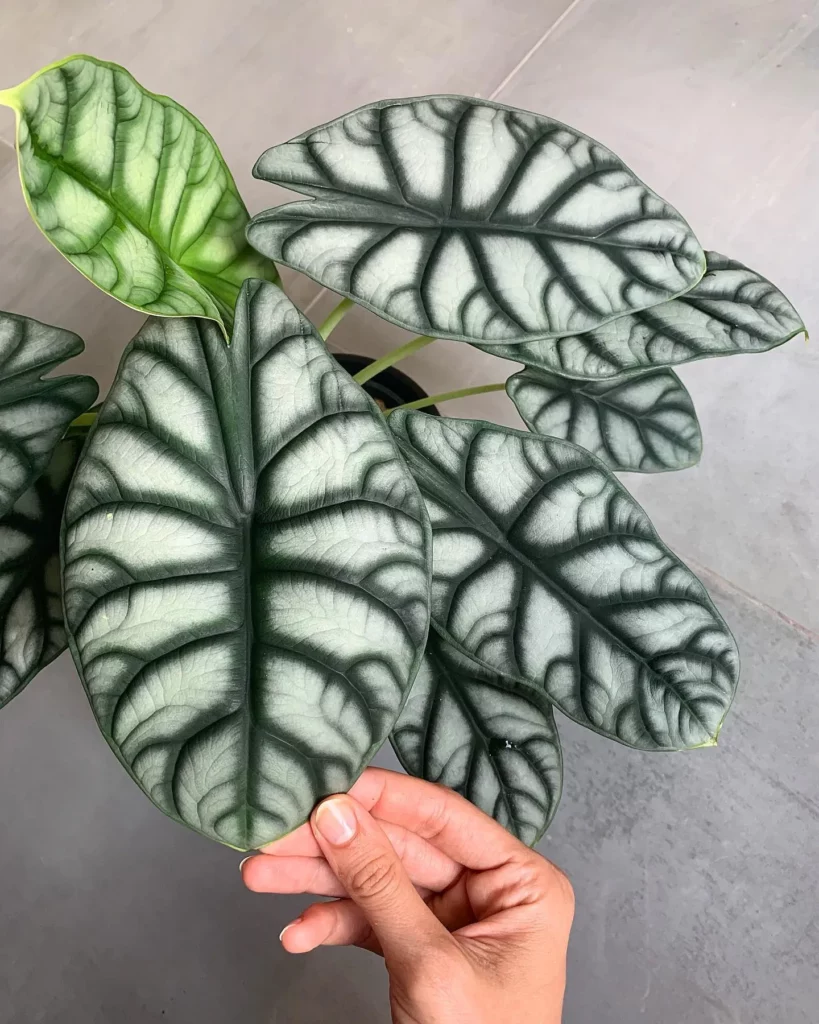
Alocasia plants require regular fertilizing during the growing season to promote healthy foliage growth and strong roots. Fertilizing provides essential nutrients that are necessary for optimal plant development.
Liquid Fertilizer
No products found.
One effective method of fertilizing Alocasia is through the use of liquid fertilizer formulated specifically for houseplants. Dilute the liquid fertilizer to half strength and feed the plant once or twice a month. This ensures that the plant receives a balanced supply of nutrients without the risk of overfertilization. Using a liquid fertilizer allows for easy application and quick absorption by the plant’s roots.
Slow-Release Fertilizer
Alternatively, slow-release fertilizers can also be used to nourish Alocasia plants. These fertilizers come in the form of pellets or granules that release nutrients gradually over time. Follow the package instructions for application rates and frequency. Slow-release fertilizers provide a continuous source of nutrients, reducing the need for frequent applications.
No products found.
It is important to note that overfertilizing Alocasia plants can lead to salt buildup in the soil, which can cause damage to the roots and foliage. It is recommended to follow the recommended dosage and frequency when fertilizing.
During the dormant period, typically in fall and winter, fertilizing should be ceased as the plant is not actively growing. Resume fertilizing once new growth emerges in the following spring.
Potting Alocasia

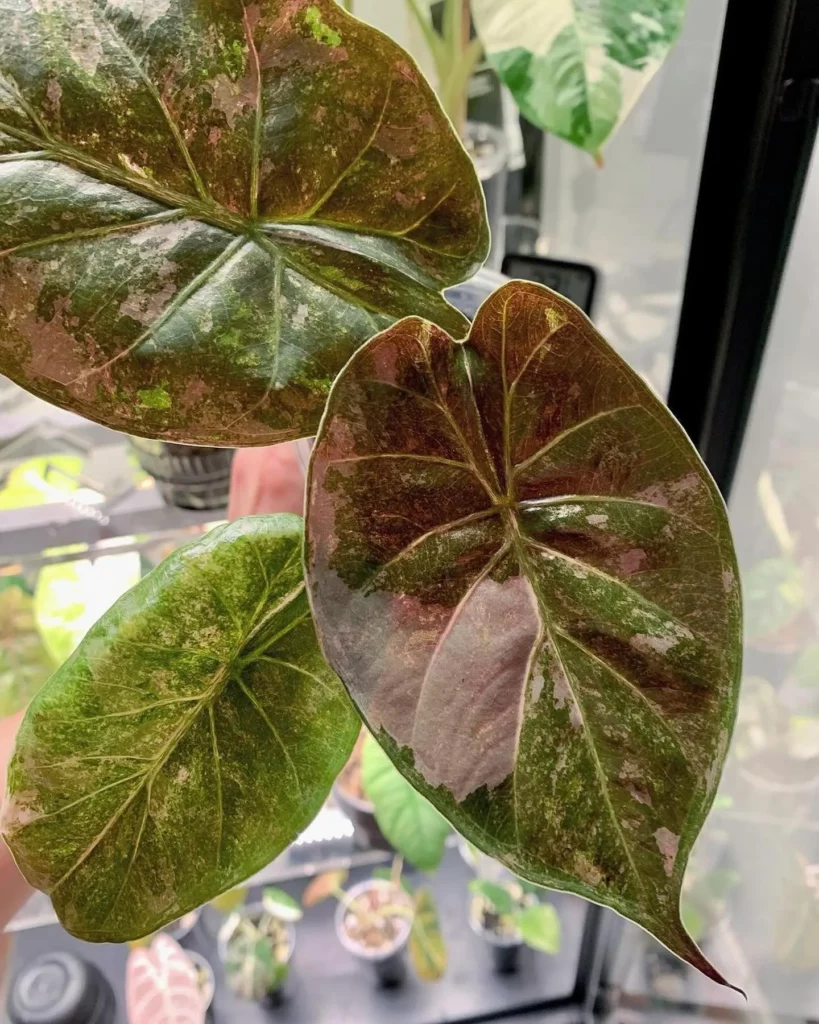
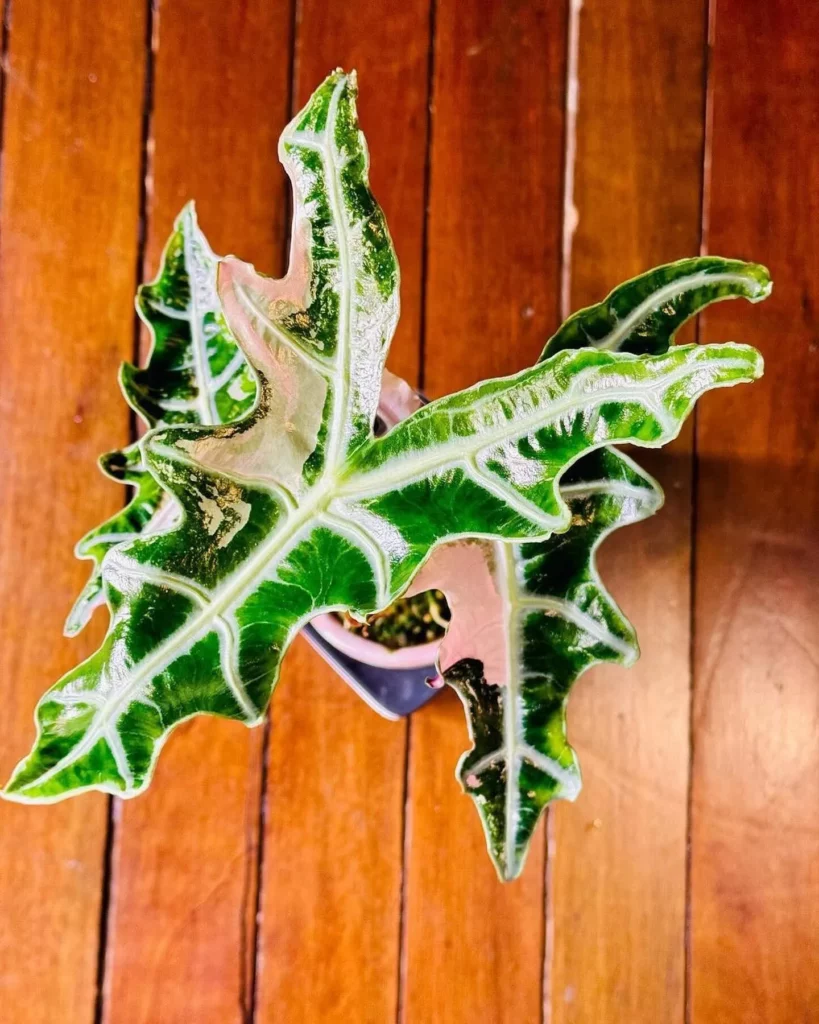
Alocasia plants are best left slightly pot bound before repotting. It’s important to wait until the roots become visible in the drainage hole before considering repotting. When repotting, choose a pot that is 1 to 2 inches larger in diameter and slightly deeper than the previous pot. This will provide enough space for the plant’s roots to grow.
No products found.
To ensure proper drainage, it’s crucial to use a well-draining potting mix specifically formulated for Alocasia or a high-quality all-purpose potting mix. You can further enhance drainage by adding amendments such as orchid bark, perlite, or coco coir to the potting mix. These amendments help prevent water from pooling and promote healthy root growth.
Spring is the ideal time to repot Alocasia plants. This is when they begin putting on new growth, indicating their readiness for a larger container. Repotting during this time allows the plant to acclimate to its new pot and minimize any potential stress.
Propagation of Alocasia

Alocasia plants can be propagated through clump or rhizome division. This is typically done in the spring when the plant is actively growing.
To propagate through clump division, gently dig out the plant from its container, being careful not to damage the roots or leaves. Look for root clumps with new growth and carefully separate them into individual sections.
Pot up the divided clumps in separate containers filled with moist potting mix, ensuring that each division has enough roots for successful growth.
Keep the pots in a warm and humid environment, such as a greenhouse or a room with high humidity. Moisture is important for the new growth to develop.
Water the divided clumps regularly, keeping the soil evenly moist but not waterlogged. Use a gentle watering technique to avoid disturbing the fragile roots.
Once new growth emerges from the divided clumps, continue to care for the new plants as you would with mature Alocasia. Provide bright indirect light, maintain proper watering, and fertilize regularly during the growing season.
Growth and Development of Alocasia
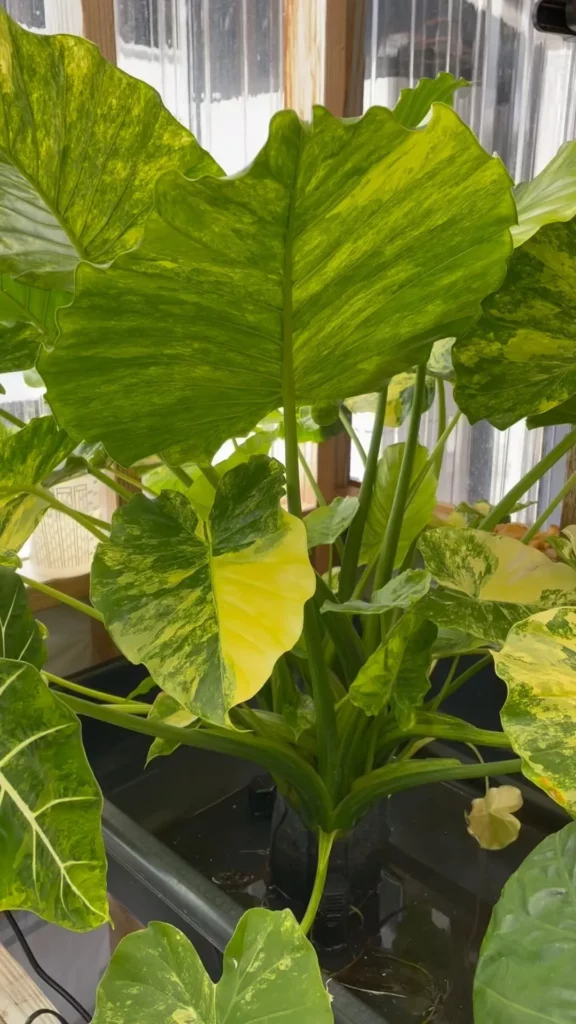


With proper care, Alocasia plants can experience fast growth, reaching impressive heights of 2 to 10 feet, depending on the species and variety. They are renowned for their vigorous growth rate, often producing a new leaf every week during the summer months. However, it’s essential to note that when grown as houseplants indoors, Alocasia may not reach their full mature height.
It is crucial to give Alocasia plants ample space to accommodate their growth. As tropical plants, they require a warm and spacious environment to thrive. During the winter months, Alocasia plants may go dormant, but it’s important to provide them with a warm indoor location to ensure their well-being.
Pests and Diseases of Alocasia
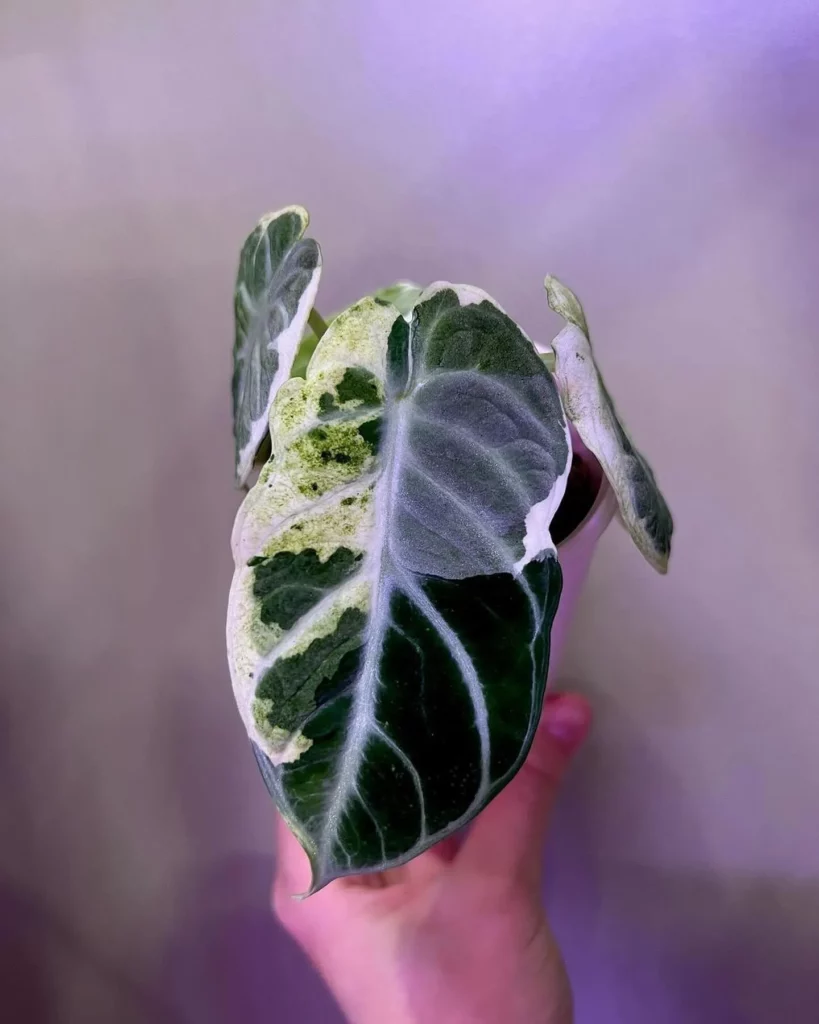
Alocasia plants are generally resilient and easy to care for, but they can still encounter some common pests and diseases that can affect their health and appearance. Being aware of these potential issues and taking preventative measures can help ensure the well-being of your Alocasia plants.
Pests:
- Spider Mites: One of the most common pests that Alocasia plants can attract are spider mites. These tiny arachnids feed on the sap of the plant, resulting in yellowed leaves, webbing, and stunted growth. Regularly inspect your plants for any signs of spider mites, such as small webs or speckled leaves. If detected, you can wipe down the leaves with a mixture of mild soap and water or use a commercial insecticidal soap. Increasing humidity around the plant by misting it regularly can also discourage spider mite infestations.
Diseases:
- Fungal Infections: Alocasia plants are prone to fungal infections, especially if the soil is kept consistently wet or if there is poor air circulation. Overwatering can lead to root rot, which can eventually spread to the leaves and cause them to turn yellow or brown. To prevent fungal issues, it is crucial to water your Alocasia plants properly by allowing the top few inches of the soil to dry out before watering again. Providing adequate spacing between plants also encourages good air circulation, minimizing the risk of fungal infections. If you notice any signs of fungal infections, such as spots or mold on the leaves, it is important to take prompt action. Remove affected leaves, improve ventilation around the plant, and consider applying a fungicide specifically formulated for indoor plants.
Using Alocasia in Home or Office Decor
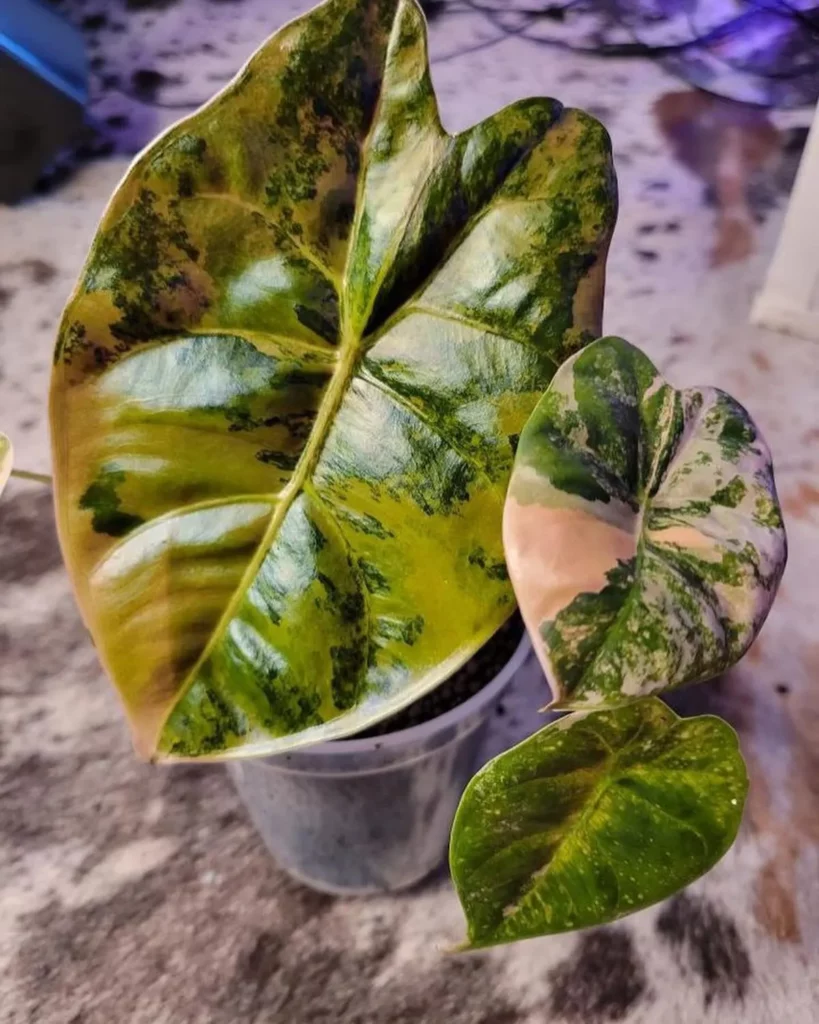


Alocasia plants are not just beautiful additions to your indoor or outdoor space; they can also be used to enhance your home or office decor. With their striking foliage and tropical vibes, Alocasia plants can effortlessly elevate the aesthetic appeal of any room or outdoor setting.
Indoor Display
Indoor spaces provide the perfect opportunity to showcase the beauty of Alocasia plants. Here are some creative ways to incorporate these plants into your indoor decor:
- Place Alocasia plants as floor specimens in spacious areas. Their large, heart- or arrow-shaped leaves will command attention and become a focal point of the room.
- Create a stunning display by grouping Alocasia plants together with other houseplants on a table or plant stand. Mix and match different textures and colors to add visual interest.
- Showcase Alocasia plants in colorful pots on an office desk or tabletop. Their vibrant foliage will bring life to any workspace.
Outdoor Display
Don’t limit the beauty of Alocasia plants to your indoor spaces; these versatile plants can also be used to enhance your outdoor decor. Here are some ideas for incorporating Alocasia plants into your outdoor display:
- Plant Alocasia plants in shady beds or containers to create an exotic tropical oasis in your outdoor space. Their lush foliage will provide a stunning contrast to other plants.
- Combine Alocasia plants with other shade-loving plants to create a diverse and eye-catching outdoor display. Consider pairing them with ferns, hostas, or begonias for a harmonious arrangement.
- Use Alocasia plants as a centerpiece in outdoor seating areas or patio spaces. Their dramatic foliage will add a touch of elegance to your outdoor gatherings.
Alocasia Companions

Alocasia plants can be paired with other houseplants that thrive in similar growing conditions to create a colorful indoor display. By combining different plant varieties, you can create a lush and diverse arrangement that adds visual interest to your space.
Some suitable companions for Alocasia include pothos, calathea, bird’s nest fern, fig tree, philodendron, and homalomena. Each of these plants brings its own unique characteristics to the mix, such as trailing vines, bold foliage patterns, or tall and slender stems.
When selecting companions for your Alocasia, consider their light and humidity requirements to ensure compatibility. These plants generally prefer bright indirect light and a moderately humid environment. Grouping them together can provide a variety of textures, colors, and heights, creating an eye-catching display.
Experiment with different combinations to find the perfect arrangement for your space. Consider placing taller plants at the back and trailing or compact varieties in the front. By carefully selecting and arranging your Alocasia companions, you can create a beautiful indoor display that brings life and vibrancy to your home or office.
FAQ
How large do Alocasia plants grow?
With proper care, Alocasia plants can reach heights of 2 to 10 feet, depending on the species and variety.
What are the common colors and shapes of Alocasia leaves?
Alocasia leaves come in various colors, including green, black, red, and silver. They have large, heart- or arrow-shaped foliage with different sizes and shapes.
What kind of light do Alocasia plants prefer?
Alocasia plants prefer bright indirect light, similar to the conditions they would have under a dense rainforest canopy.
How should I water my Alocasia plant?
Water your Alocasia plant when the top 2 to 3 inches of the soil is dry to the touch, ensuring the soil is evenly moist but not soggy.
How often should I fertilize my Alocasia plant?
Feed your Alocasia plant once or twice a month during the growing season with a liquid fertilizer diluted to half strength or a slow-release fertilizer according to the package instructions.
When and how should I repot my Alocasia plant?
Repot your Alocasia plant in spring when the plant begins putting on new growth. Choose a pot that is slightly larger in diameter and deeper than the previous pot, using a well-draining potting mix.
How can I propagate my Alocasia plant?
Alocasia plants can be propagated through clump or rhizome division in the spring. Gently separate the root clumps with new growth and pot them up in separate containers.
Do Alocasia plants go dormant?
Yes, Alocasia plants may go dormant during the winter months, but they should be kept in a warm indoor location.
How can I prevent pests and diseases on my Alocasia plant?
Regularly inspect your Alocasia plant for pests and diseases, controlling spider mites with soapy water and increasing humidity. Avoid overwatering and ensure proper air circulation to prevent fungal infections.
How can I incorporate Alocasia plants into my home or office decor?
Alocasia plants can be displayed as floor specimens, grouped with other houseplants, or showcased in colorful pots. They can also be planted outdoors in shady beds or containers to add a tropical touch.
What are some suitable companions for Alocasia plants?
Some suitable companions for Alocasia plants include pothos, calathea, bird’s nest fern, fig tree, philodendron, and homalomena. Grouping these plants together can create a lush and diverse indoor display.





